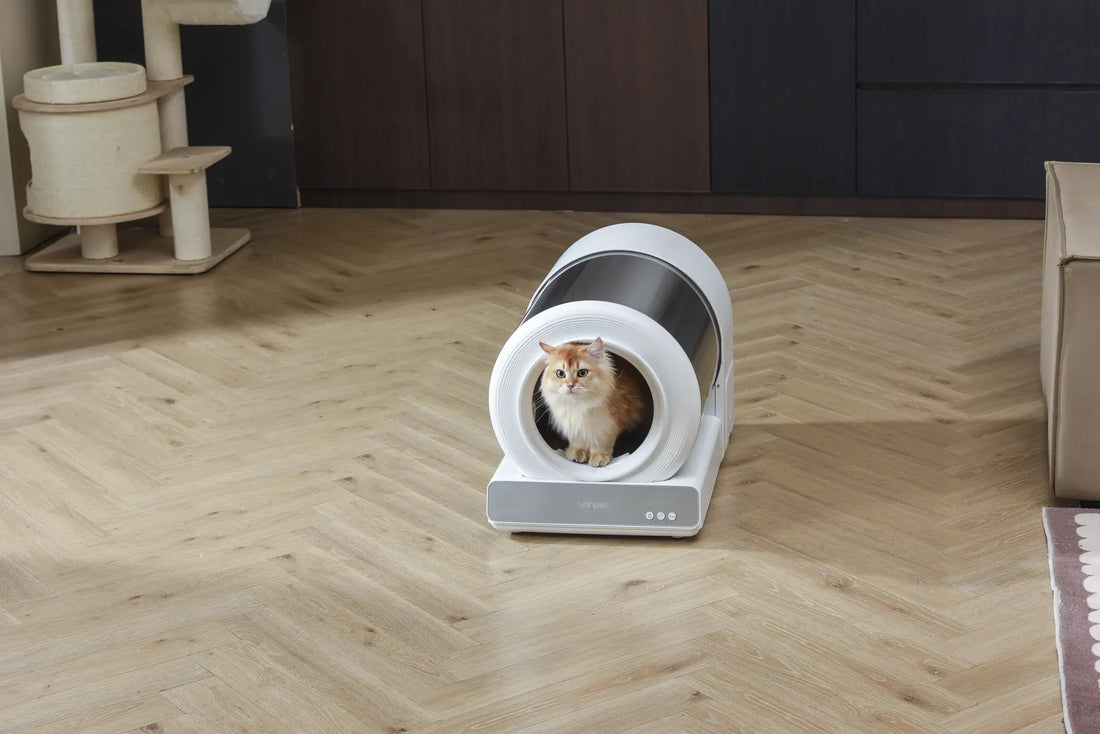Retraining a cat to use a litter box can be a challenging yet rewarding process. Whether your feline friend has suddenly stopped using the litter box or has never been properly trained, understanding the underlying causes and implementing the right strategies can make all the difference. This article will guide you through the essential steps to retrain your cat and ensure a harmonious living environment for both of you.
Understanding Why Cats Avoid the Litter Box
Before diving into retraining methods, it's crucial to understand why your cat might be avoiding the litter box. Several factors can contribute to this behavior, including medical issues, stress, and environmental changes. Cats are creatures of habit, and any disruption in their routine can lead to litter box avoidance. Additionally, certain medical conditions, such as urinary tract infections or arthritis, can make it painful for your cat to use the litter box. Identifying the root cause is the first step in addressing the problem.
Creating a Comfortable Litter Box Environment
One of the most effective ways to retrain your cat to use the litter box is by ensuring that the environment is comfortable and appealing. Cats are highly sensitive to their surroundings, and a poorly maintained litter box can be a major deterrent. Make sure to clean the litter box regularly, as cats prefer a clean and odor-free space. Additionally, consider the type of litter you are using. Some cats have preferences for certain textures or scents, so experimenting with different types of litter can help you find the one that your cat prefers.
Choosing the Right Litter Box
The size and type of litter box you choose can also play a significant role in your cat's willingness to use it. Ensure that the litter box is large enough for your cat to move around comfortably. Some cats prefer covered litter boxes for privacy, while others may feel confined and prefer an open one. Observing your cat's behavior can give you valuable insights into their preferences. If you have multiple cats, it's essential to provide one litter box per cat, plus an extra one, to prevent territorial disputes.
Addressing Behavioral Issues
Behavioral issues can also contribute to litter box avoidance. Cats may develop negative associations with the litter box due to past experiences, such as being startled while using it. To address this, try to create a positive association with the litter box by placing it in a quiet, low-traffic area. You can also use positive reinforcement techniques, such as offering treats or praise when your cat uses the litter box correctly. If your cat continues to avoid the litter box, consulting with a veterinarian or a feline behaviorist may be necessary to address any underlying behavioral issues.
Managing Stress and Anxiety
Stress and anxiety can have a significant impact on your cat's litter box habits. Changes in the household, such as moving to a new home, introducing a new pet, or even rearranging furniture, can cause stress for your cat. To help your cat feel more secure, try to maintain a consistent routine and provide plenty of hiding spots and vertical spaces where they can retreat. Using pheromone diffusers or sprays can also help reduce anxiety and promote a sense of calm. By addressing the sources of stress, you can create a more conducive environment for your cat to use the litter box.
Gradual Retraining Techniques
If your cat has developed a habit of avoiding the litter box, retraining may require patience and persistence. Start by confining your cat to a small, easily manageable area with the litter box, food, and water. This will help your cat associate the litter box with the appropriate place to eliminate. Gradually increase the space as your cat becomes more consistent in using the litter box. It's important to avoid punishment, as this can create fear and further exacerbate the problem. Instead, focus on positive reinforcement and consistency to encourage the desired behavior.
Monitoring Progress and Making Adjustments
As you work on retraining your cat, it's essential to monitor their progress and make adjustments as needed. Keep a close eye on your cat's litter box habits and note any changes in behavior. If your cat continues to have accidents, consider whether there are any environmental factors that may be contributing to the issue. Sometimes, making small adjustments, such as changing the location of the litter box or switching to a different type of litter, can make a significant difference. Remember that every cat is unique, and what works for one may not work for another.
When to Seek Professional Help
While many litter box issues can be resolved with the right approach, there are times when professional help may be necessary. If your cat continues to avoid the litter box despite your best efforts, it's important to consult with a veterinarian to rule out any medical conditions. Additionally, a feline behaviorist can provide specialized guidance and support to address any underlying behavioral issues. Seeking professional help can ensure that your cat receives the care and attention they need to overcome litter box avoidance.
Retraining a cat to use a litter box may require time, patience, and a bit of trial and error, but the effort is well worth it. By understanding your cat's needs and creating a comfortable and stress-free environment, you can help them develop positive litter box habits. Remember that every cat is different, and finding the right approach may take some experimentation. With persistence and the right strategies, you can successfully retrain your cat and enjoy a cleaner, more harmonious home.













